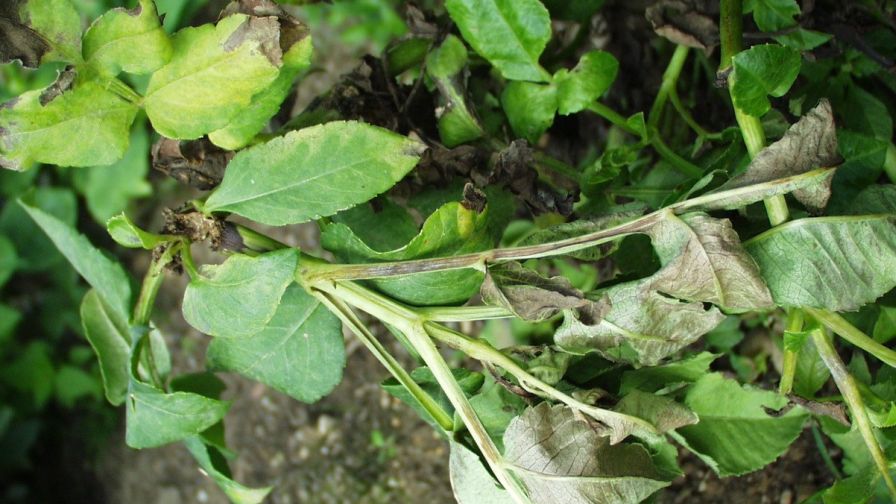Dahlia Pests to Monitor in Your Greenhouse

European corn borer in dahlia; Photo: Dan Gilrein, Cornell University
The popularity of dahlias only seems to increase, but this has also led to a rise in associated pests and pathogens. In a recent e-Gro alert, Dan Gilrein of Cornell University outlines some of the more common insect and mite pests to watch for on dahlias, especially those grown for cut flowers.
- Potato leafhopper on dahlias sounds misplaced, but in fact it’s one of the most damaging pests seen dahlias. In the Northeast U.S. the pale-green adults migrate in each year during late spring from their southeastern overwintering sites. Feeding by adults and nymphs causes hopperburn symptoms that can be mistaken for fertilizer, drought, or other damage. Foliage may be dramatically stunted with yellowing and edge burn. Population levels vary considerably from year to year and even within the season.
- European corn borer, a moth, is another pest that’s not very discriminating and finds dahlias quite to its liking. The stem-boring caterpillars cause shoot wilting, dieback, and breakage. The effect on individual plants can be quite dramatic. The caterpillars overwinter in stems (conventional field corn is a common host) and, like potato leafhopper, population levels vary from year to year.
- Western flower thrips is a major pest in greenhouse bedding plant (including dahlia) production, but usually of minor interest in production of outdoor cut dahlias. Concern might be greatly elevated, however, where tospovirus (tomato spotted wilt, impatiens necrotic spot), vectored by this insect and with a broad host range, is present.
- Twospotted spider mite feeding under leaves causes a kind of dusty bronzing beneath and overall yellowing of foliage that can be mistaken for nitrogen deficiency. The mites overwinter under leaves outdoors and in unheated ranges and of course can be active all winter in heated greenhouses. In outdoor plantings damage is usually seen after mid-summer when mite levels have built during dry and warm periods. Populations can start in hedgerows, moving into adjacent production areas as the weeds dry down in summer.
Continue reading at e-Gro.org.
0
1
5
Dahlia Pests to Monitor in Your Greenhouse




